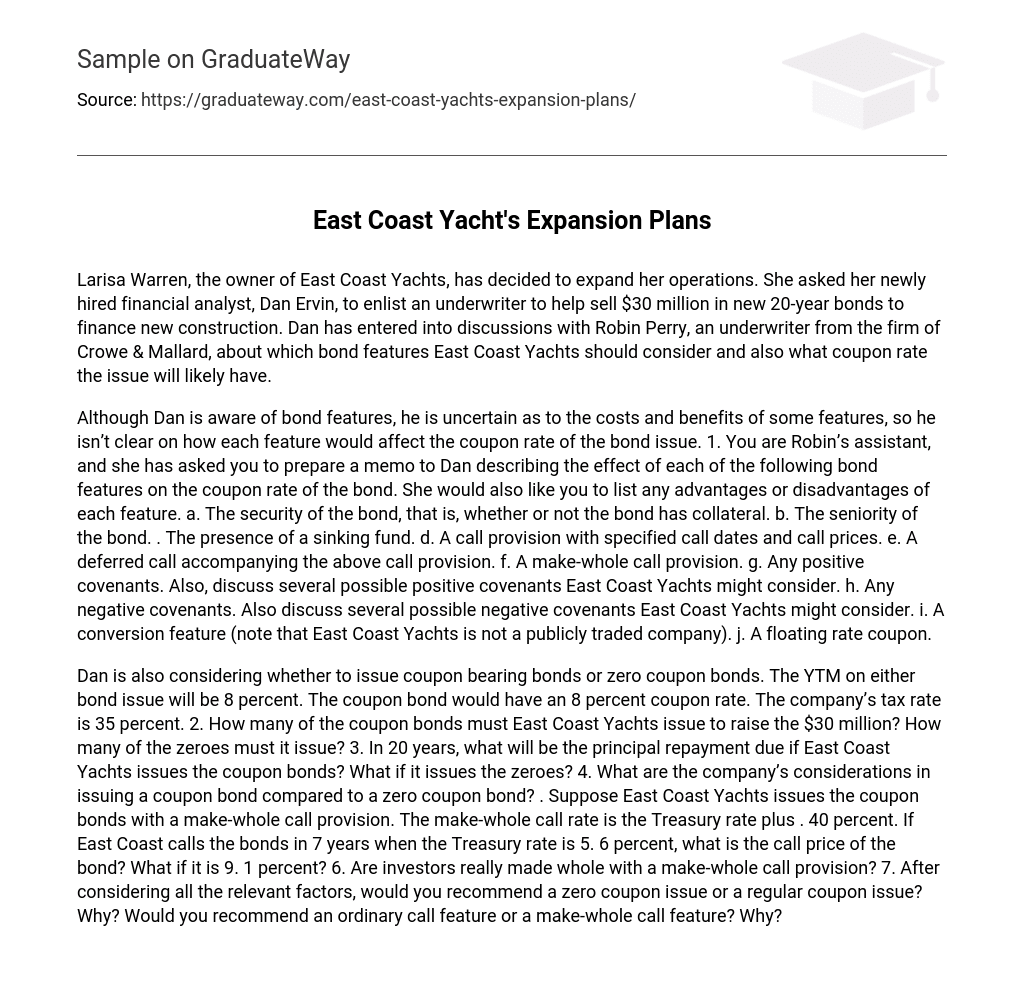Larisa Warren, owner of East Coast Yachts, wants to expand her operations. She has tasked her newly hired financial analyst, Dan Ervin, with finding an underwriter who can help sell $30 million in new 20-year bonds for funding new construction. Dan is currently in talks with Robin Perry, an underwriter from Crowe & Mallard, to discuss the bond features that East Coast Yachts should consider and determine the likely coupon rate for the issue.
Dan is unsure about the costs and benefits of certain bond features and how they would impact the coupon rate of the bond issue. Robin’s assistant is tasked with creating a memo for Dan, explaining the effect and advantages/disadvantages of each bond feature. These features include:
- The presence or absence of collateral as security for the bond.
- The seniority of the bond.
- Whether or not a sinking fund is in place.
- A call provision with specified call dates and call prices.
- A deferred call provision accompanying the above call provision.
- The make-whole call provision.
- Any positive covenants, including possible options for East Coast Yachts to consider.
- Any negative covenants, including possible options for East Coast Yachts to consider.
- A conversion feature (taking into account that East Coast Yachts is not publicly traded).
- A floating rate coupon.
Dan is also considering whether to issue coupon bearing bonds or zero coupon bonds. The YTM on either bond issue will be 8 percent. The coupon bond would have an 8 percent coupon rate. The company’s tax rate is 35 percent. How many of the coupon bonds must East Coast Yachts issue to raise the $30 million? How many of the zeroes must it issue? In 20 years, what will be the principal repayment due if East Coast Yachts issues the coupon bonds? What if it issues the zeroes? What are the company’s considerations in issuing a coupon bond compared to a zero coupon bond? Suppose East Coast Yachts issues the coupon bonds with a make-whole call provision. The make-whole call rate is the Treasury rate plus .40 percent. If East Coast calls the bonds in 7 years when the Treasury rate is 5.6 percent, what is the call price of the bond? What if it is 9.1 percent? Are investors really made whole with a make-whole call provision? After considering all the relevant factors, would you recommend a zero coupon issue or a regular coupon issue? Why? Would you recommend an ordinary call feature or a make-whole call feature? Why?





